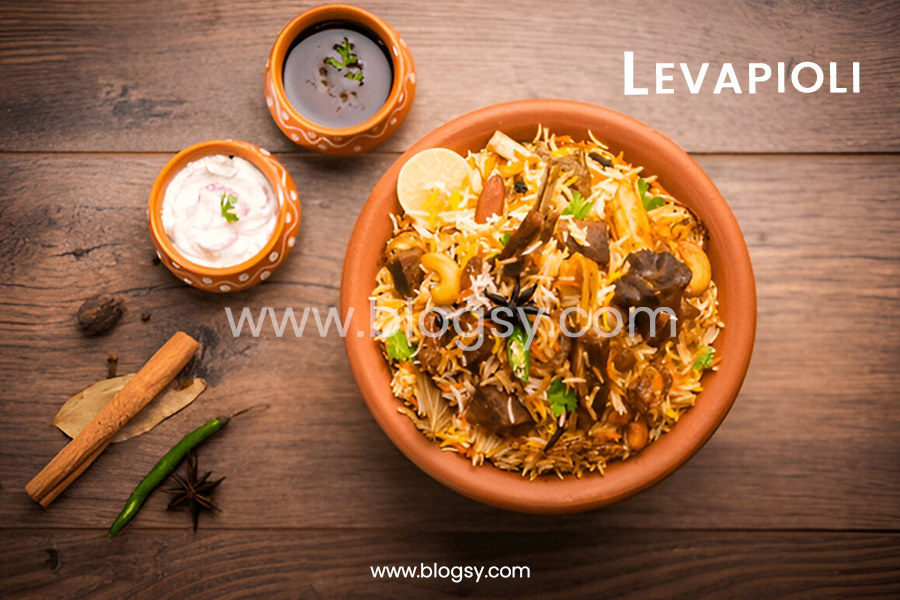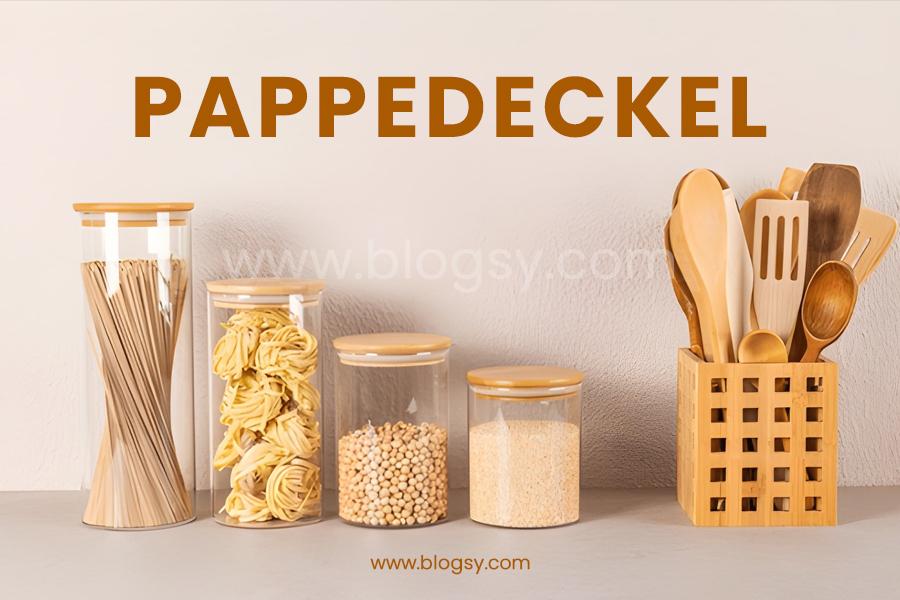
Levapioli is more than just a dish—it’s a symbol of tradition, flavor, and cultural pride. For centuries, families have prepared levapioli in kitchens across regions where culinary heritage is deeply valued. Known for its balance of taste and texture, this traditional specialty brings people together at celebrations, family tables, and even in modern restaurants.
In this guide, we’ll take a deep dive into everything about levapioli—its fascinating history, how it’s made, the varieties that exist, its health benefits, and the role it plays in culture today. Whether you’ve grown up eating levapioli or are just discovering it, you’ll walk away with a complete understanding of why it continues to hold such timeless importance.
What is Levapioli?
At its core, levapioli is a traditional culinary creation rooted in heritage. While recipes may vary, the essence of levapioli lies in its ability to strike a perfect balance between flavor and comfort. Families often describe it as a dish that carries memories of childhood, festive gatherings, and community spirit.
Levapioli is not simply food; it’s a representation of culture. Passed down through generations, its preparation is seen as both an art and an act of preservation. Depending on the region, levapioli can take on different textures, fillings, and even cooking styles, but one thing always remains: its role as a beloved traditional favorite.
The History Behind it
The history of levapioli stretches back centuries, making it one of the most enduring traditional dishes still enjoyed today. Scholars of culinary culture suggest that levapioli likely began as a humble, home-cooked recipe prepared by farming families using local ingredients. Over time, it evolved to suit festive occasions and became a centerpiece in community gatherings.
As trade routes expanded, so did the ingredients available for levapioli. This led to regional variations—each household adding its own twist while still keeping the original charm intact. Oral traditions and handwritten recipe books ensured that levapioli was passed from one generation to the next, keeping its legacy alive even in modern kitchens.
Today, Levapioli represents a bridge between the past and the present. It is still made with care, often following the same techniques used hundreds of years ago, proving its timeless appeal.
Traditional Varieties of Levapioli
One of the most fascinating aspects of its wide range of traditional varieties. Each region has developed its own unique version, reflecting local culture, climate, and available ingredients.
-
Classic Levapioli: The original recipe, prepared with traditional fillings and simple cooking methods.
-
Festive Levapioli: Made during holidays or weddings, often enriched with spices, nuts, or special ingredients.
-
Regional Variants: Some areas prefer savory levapioli, while others lean toward sweeter versions.
-
Seasonal Levapioli: Recipes adjusted according to harvest cycles, making use of fresh, local produce.
What makes these varieties remarkable is how families adapt them while still preserving the essence of levapioli. This flexibility has allowed the dish to thrive for centuries.
Ingredients That Define it
At the heart of Levapioli are fresh, simple, and wholesome ingredients. While the exact recipe can differ, the foundation remains consistent:
-
Core Ingredients: Flour or grains, fresh herbs, and locally sourced fillings.
-
Proteins and Vegetables: Depending on the region, meat, cheese, or plant-based options are common.
-
Spices and Seasonings: A mix of traditional spices brings depth and aroma.
-
Optional Additions: Nuts, dried fruits, or oils for festive versions.
One of the reasons it remains popular is that it can be customized based on what’s available in the kitchen. This adaptability has made it both a comfort food and a gourmet choice.
Nutritionally, it provides a balance of carbohydrates, proteins, and healthy fats, making it not only delicious but also wholesome.
How Levapioli is Made (Step-by-Step Guide)
Making levapioli is as much about tradition as it is about cooking. Here’s a step-by-step breakdown:
-
Preparing the Dough or Base: This forms the structure of levapioli and requires patience to get the right texture.
-
Crafting the Filling: A mixture of ingredients that reflects local culture and taste preferences.
-
Assembling the Levapioli: Careful folding, shaping, or layering depending on the style.
-
Cooking Method: Boiling, baking, or steaming—each method gives levapioli a distinct finish.
-
Final Touches: Adding spices, oils, or garnishes to enhance flavor.
Beginners are often surprised by how rewarding the process feels. Making levapioli is not just about food—it’s about connection, mindfulness, and preserving tradition.
Modern Takes on Levapioli
In today’s globalized world, chefs and home cooks are reimagining levapioli with creative twists:
-
Fusion Levapioli: Blending flavors from other cuisines for innovative results.
-
Vegan and Vegetarian Versions: Using plant-based fillings while keeping the authentic flavor.
-
Restaurant Gourmet Styles: Upscale presentations in fine dining.
-
Quick Home Recipes: Simplified versions for busy lifestyles without losing essence.
These modern adaptations show how Levapioli continues to evolve while still honoring its roots.
Levapioli in Celebrations and Traditions
Levapioli has always been more than food—it’s a cultural symbol. Families prepare it during weddings, harvest festivals, and religious holidays. Its presence on the table often signifies abundance, unity, and gratitude.
In many traditions, making it is a communal activity. Relatives and neighbors gather to cook together, sharing stories and laughter while preparing large batches. This not only strengthens community bonds but also ensures the recipe continues to live on in shared memory.
Health Benefits of Product
Levapioli is not only delicious but also nourishing when prepared with wholesome ingredients. Some health benefits include:
-
Balanced Nutrition: Carbs for energy, proteins for strength, and essential vitamins from herbs and vegetables.
-
Digestive Support: Many recipes use herbs known to aid digestion.
-
Satiating Comfort Food: Keeps you full and satisfied.
-
Customizable for Health Goals: Can be made lighter, gluten-free, or plant-based.
While festive versions can be richer, traditional levapioli often lean toward wholesome and balanced nutrition.
Impact Around the World
Although Levapioli has deep roots in its place of origin, its journey across borders has given it new life and meaning. Wherever immigrant communities settled, it traveled with them, often becoming a comforting reminder of home. For many families, preparing levapioli abroad wasn’t just about eating—it was about keeping a piece of heritage alive in unfamiliar surroundings.
In Europe, it gained attention in culinary circles that celebrate regional diversity. In Italy, France, and Spain, chefs began experimenting with local flavors while preserving the structure of traditional levapioli. These adaptations gave rise to gourmet versions served in high-end restaurants, appealing to travelers and food enthusiasts eager to explore authentic heritage dishes.
Levapioli in Pop Culture
Food often holds symbolic meaning in popular culture, and it is no exception. Its presence in books, films, and television shows has helped introduce it to wider audiences, even those unfamiliar with its cultural origins. In many cases, levapioli is depicted as a dish of togetherness, often shown during family dinners, festivals, or emotional moments that highlight themes of belonging and nostalgia.
In literature, authors have used levapioli as a cultural marker—describing its preparation or aroma as a way to transport readers into the heart of family kitchens. These scenes often emphasize tradition, showing how recipes passed down through generations embody memory and identity. Even beyond direct mentions, Levapioli represents a larger cultural idea: food as memory. Its portrayal often taps into universal emotions—homecoming, comfort, and family ties.
How to Pair it
Like any great dish, levapioli shines when paired thoughtfully:
-
Beverages: Herbal teas, wines, or fresh juices, depending on the style.
-
Side Dishes: Light salads, roasted vegetables, or breads.
-
Presentation: Traditional platters for authenticity, or modern plates for elegance.
Pairing elevates the experience and highlights the complexity of levapioli flavors.
Common Mistakes When Making it
Even experienced cooks can make errors with levapioli. Some common ones include:
-
Overstuffing or under-seasoning the filling.
-
Not sealing or shaping properly, leading to leaks.
-
Using low-quality ingredients.
-
Rushing the cooking process.
The best advice is to cook with patience, follow traditions closely, and practice until you achieve perfection.
Conclusion
It is more than just a dish—it’s a story of tradition, love, and shared experiences. From its historical roots to modern adaptations, levapioli continues to hold a special place in culinary culture. It represents heritage while adapting to new lifestyles, proving that true classics never fade.
Whether you enjoy it during a festival, at a family dinner, or in a gourmet restaurant, it brings warmth, flavor, and connection to the table. And perhaps that’s the most beautiful part—it’s not only food, but also a reminder of where we come from and how tradition continues to nourish our future.
FAQs About Levapioli
Q: What makes levapioli unique?
A: It’s a blend of tradition, versatility, and deep cultural roots.
Q: Can I make levapioli at home easily?
A: Yes, especially if you start with a simple recipe and gradually explore more complex versions.
Q: Is levapioli healthy?
A: Yes, when made with fresh and wholesome ingredients, it can be both nourishing and satisfying.
Q: Can levapioli be frozen for later use?
A: Absolutely—many families prepare extra batches to freeze and enjoy later.
Don’t miss out on any news—keep in touch for real-time information, visit: Blogsy.!



